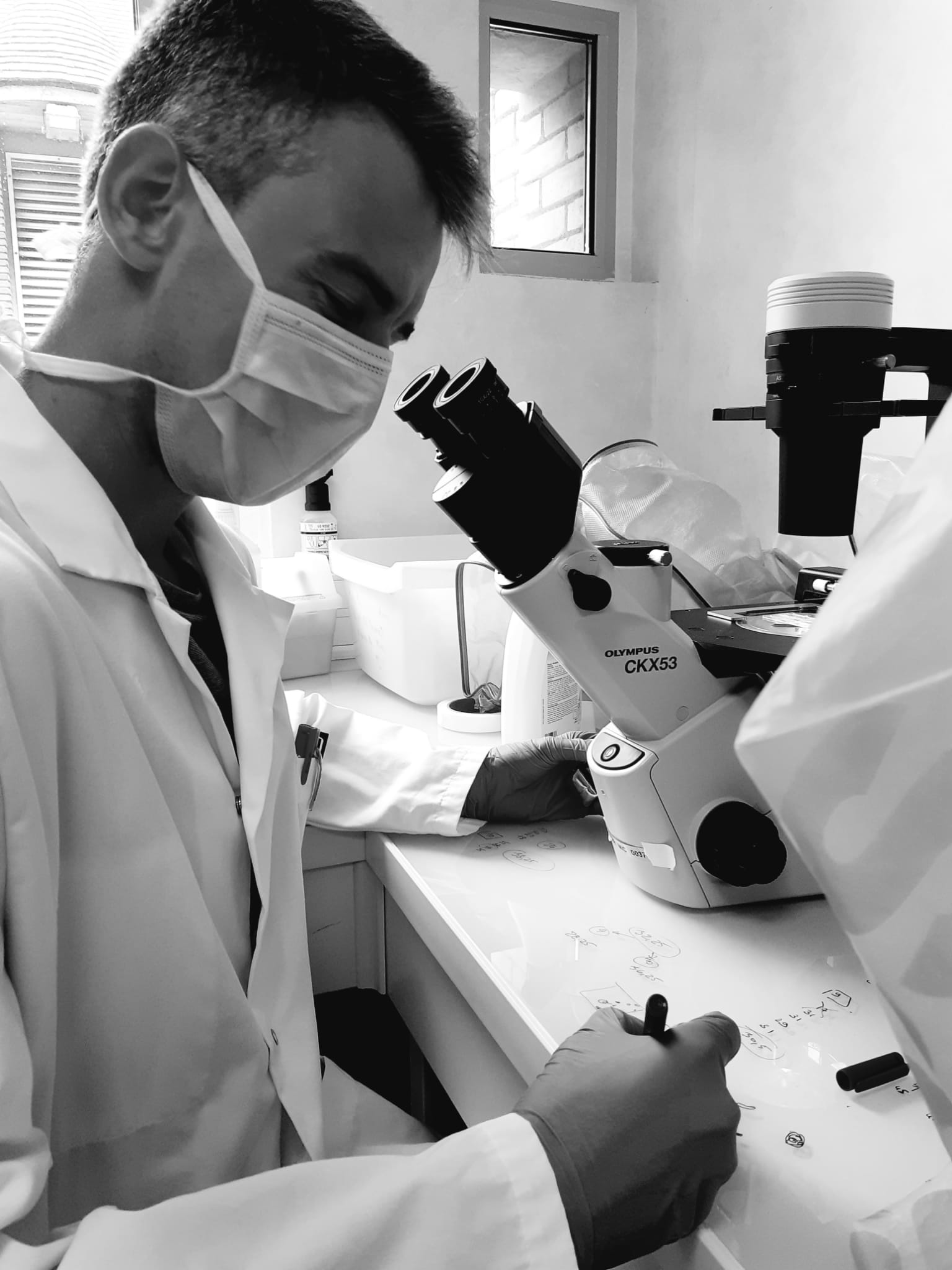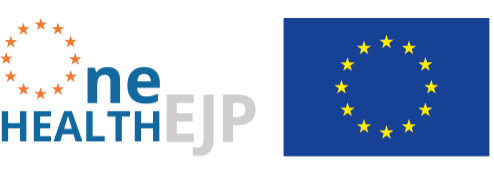5 Rue Lespagnol, Paris 20e Arrondissement, Île-de-France, France
9 Boulevard de la Paix, Reims, Grand-Est, France
École Vétérinaire de Maisons-Alfort, Maisons-Alfort, Île-de-France, France
Antonie van Leeuwenhoeklaan 9, De Bilt, Utrecht, The Netherlands
14 Rue Pierre et Marie Curie, Paris 5e Arrondissement, Île-de-France, France

The Project #TOXSAUQMRA
| Start: | November 2019 |
| Duration: | 3 years |
| Domain: | Foodborne Zoonoses |
| Members: | ANSES- France, RIVM- the Netherlands |
| Contact: | Dr Pascal Boireau (ANSES) |
ToxSauQMRA: Study of the tropism and persistence of Toxoplasma gondii: from pork carcass to sausage and dry ham, aquantitative microbiological risk assessment
Toxoplasma gondii is an intracellular coccidian parasite and one of the most successful parasites worldwide. Sexual reproduction resulting in shedding of oocysts occurs only in felids (definitive hosts), but virtually all warm blooded animals can carry tissue cysts and act as intermediate hosts. Humans, as intermediate hosts, become infected with T. gondii through ingestion of oocysts (e.g. when handling soil or cat litter, or on unwashed vegetables) or tissue cysts in raw or undercooked meat. If a woman becomes infected for the first time during pregnancy, T. gondii is transmitted to the fetus in approximately 30% of the occasions (Thiebaut et al., 2007). This can result in abortion or a baby born with central nervous system abnormalities, chorioretinitis, unspecific signs, or without symptoms. T. gondii is also an important cause of disease in immune‐compromised individuals, and was a major cause of death in AIDS‐patients before the introduction of highly active retroviral therapy (Luft and Remington, 1992). Postnatal T. gondii infection has long been perceived as harmless, but is now recognized as an important cause of chorioretinitis for immunocompetent individuals (Gilbert and Stanford, 2000). Meat appears to be a major source of T. gondii infections in Europe, as in an European multi‐center case control study 30 to 63% of infections in pregnant women were attributed to meat, whereas 6 to 17% were most likely soil borne (Cook et al., 2000).
Pigs, like other livestock, can harbour tissue cysts following the ingestion of oocysts or dead animals. The surveillance plan conducted by the Ministry of Agriculture of France in 2013, and carried out by ANSES in collaboration with URCA, showed that 3.0% (CI95-[0.9-5.0%]) of pigs raised in an in-door system and 6.3% (CI95-[2.6-9.9%]) of pigs raised outdoor were seropositive for T. gondii. This seroprevalence reached 13.5% (CI95-[13.1-13.9%]) in out-door breeding sows. Viable parasite could be isolated in 22% (25/113) and 47% (16/34) of the indoor and outdoor pig carcasses analysed respectively.
With 40.4 kg per household in 2014, pork is the first meat consumed in France, whose ¾ is eaten in the form of sausage and salami products (FranceAgriMer, 2015). Among raw cured meats, dry sausage is the most widely consumed (about 75,000 tonnes of dry sausage per year in France). France alone produced just over 108,000 tonnes of sausages and dry sausages in 2015, representing about 9% of the total tonnage of all sausages (FICT data, 2016). The health safety of these products is therefore a major issue.
The share played by the consumption of pork meat in human contaminations is not known, nor is the risk of transmission of the parasite via the consumption of cured meat products. As early as 1999, the Codex Alimentarius Commission recommended that microbiological risk assessment should be based on a quantitative estimate. The high prevalence of toxoplasmosis in France in humans (32%) and the fact that the main mode of contamination is food-borne, fully justifies the conduct of a quantitative microbiological risk assessment (QMRA).
If, in France, we have the T. gondii seroprevalence in various meat-producing species (ovine, bovine, pig, horses) enabling such an analysis, it lacks however the quantitative estimates concerning the distribution of parasites in the various parts (muscles) of a carcass and the reduction of the parasite load according to the cooking, preparation or preservation, as identified by an expert group of ANSES in 2005 (AFSSA, 2005). The present project aims at answering this lack of knowledge, providing though the bases for a robust QMRA analysis in France, an European country with a high Toxoplasma positive rate among humans.
Project Outputs and Updates
During 2020, these key scientific results were achieved:
- Successful experimental infection of pigs with both parasitic forms (oocysts and tissue cysts).
- Successful collection of meat samples in spite of Covid19 shut-down.
- Complete artificial digestion of meat samples from “oocysts” pig group.
- Manufacturing of 168 dry sausages and their analysis by bioassays.
- Manufacturing of long-salting dry ham and the analysis by bioassays.
These results were produced, despite the challenges of (i) failure in oral infection with tissue cysts form of the parasite, (ii) Covid19 shut-down and (iii) the strike in the harbour of Marseille. This led to the following adaptions to the project: (i) repeating the oral infection with tissue cysts form of the parasite three times, (ii) in house production of tissue cysts and (iii) altering our sampling schemes and planning.
During 2021, these key scientific results were achieved:
- Complete artificial digestion of meat samples from “tissue cysts” pig group.
- Complete MC-PCR analysis of tissue samples and dry sausages.
- Complete data analysis of gondii tissue distribution and resistance in dry sausages.
These results were produced, despite the challenges of (i) the delay in PCR reagents delivery due to internationally high demand of PCR Covid19 testing and (ii) optimisation of MC-PCR protocol with a new UV-light lamp according to the latest published protocol (Algaba et al., 2017). These challenges were overcome by the adaptions of (i) involvement of under-graduate students for helping us with the digestions and PCR and (ii) selecting the MC-PCR protocol that gave us the best results in terms of reproducibility (Opsteegh, et al., 2010).
During 2022, these key scientific results were achieved:
- Complete assessment of the French and European country specific meat products including their composition and processing steps during production that might influence viability of potential gondii tissue cysts within.
- Adjusted and updated database necessary to the development of the up-to-date heating model as a part of the final QMRA model.
- Meta-analysis of available scientific data on the anatomical distribution within animal tissues of animals experimentally infected with T. gondii into the updated database. To be used as a step in the final QMRA model.
- Meta-analysis and data collection on the dose-response relation for gondii infections in various animal species. This will serve as a base for the estimation of the dose-response relation in humans within the final QMRA model.
- Human prevalence and risk factors analysis for further use in the final QMRA model.
These results were produced, despite the challenges of (i) non-uniform reporting of results in various publications making them not suitable for use in the QMRA modelling and (ii) time constraints caused by involvement of cooperating partners. These challenges were overcome by the adaptions of (i) the involvement of under-graduate students for helping us with the digestions and PCRs and (ii) additional short term stay at RIVM to speed up the progress on the QMRA modelling task.
Project Assets
“Modelling of age-dependent prevalence of Toxoplasma gondii in livestock, wildlife and felids.” Oral presentation. La Journée Sciences de la Vie, Université Paris Est-Créteil (UPEC), Paris-Bercy, France. 19th October 2022.
“Systematic review and modelling of age-dependent prevalence of Toxoplasma gondii in livestock, wildlife and felids in Europe.” Oral presentation. 6th international meeting on apicomplexan parasites in farm animals (ApiCowplexa2022), Bern, Switzerland. 5-7th October 2022.
“Tropism and persistence of Toxoplasma gondii: from pork carcass to dry sausage” & “Detailed anatomical distribution of Toxoplasma gondii in tissues of experimentally infected pigs” & Comparison of Toxoplasma gondii distribution in tissues of experimentally infected pigs.” 3 poster presentations. 6th international meeting on apicomplexan parasites in farm animals (ApiCowplexa2022), Bern, Switzerland. 5-7th October 2022.
“Systematic review and modelling of Toxoplasma gondii prevalence in animals of Europe.” Oral presentation. La Journée de la Recherche de l’Ecole Vétérinaire d’Alfort (ENVA), Maisons-Alfort, France. 20th September 2022.
“Systematic review and modelling of age-dependent prevalence of Toxoplasma gondii in livestock, wildlife and felids in Europe” & “Tropism and persistence of Toxoplasma gondii: from pork carcass to dry sausage” & “Detailed anatomical distribution of Toxoplasma gondii in tissues of experimentally infected pigs.” 3 oral presentations. 15th International Congress of Parasitology (ICOPA2022), Copenhagen, Denmark. 21-26th August.
“Modelling of the age-dependent prevalence of Toxoplasma gondii in livestock, wildlife and felines.” Poster presentation & 3 minute thesis competition. OHEJP Annual Scientific Meeting, Orvieto, Italy. 11-13th April 2022.
“Veterinary and public health research in France in relation to Toxoplasma gondii.” Oral presentation. The Parasitological Seminar, Brno, the Czech Republic. 17 March 2022.
“Tropism and persistence of Toxoplasma gondii: from pork carcass to dry sausage.” Poster presentation. La Journée Sciences de la Vie, Université Paris Est-Créteil (UPEC), Créteil, France. 16th February 2022.
“Toxoplasma gondii seroprevalence in European wildlife: a systematic review” & “Tropism of Toxoplasma gondii in the tissues of experimentally infected pigs.” 2 poster presentations. 13th European Multicolloquium of Parasitology (EMOP2021), Belgrade, Serbia. 12-16th October 2021.
“Toxoplasma gondii prevalence in animals in Europe: a systematic review” & “Tropism and persistence of Toxoplasma gondii: from pork carcass to sausage.” 2 poster presentations. 28th International Conference of the World Association for the Advancement of Veterinary Parasitology (WAAVP2021), Dublin, Ireland. 19-22 July 2021.
“Toxoplasma gondii prevalence in animals in Europe: a systematic review” & “Tropism and persistence of Toxoplasma gondii: from pork carcass to sausage.” 2 poster presentations & 3 minute thesis competition. OHEJP Annual Scientific meeting, Copenhagen, Denmark as hybrid event. 9-11th June 2021.
“Toxoplasma gondii seroprevalence in European wildlife:
a systematic review.” Oral presentation given on Filip’ behalf by Dr Pascal Boireau. Société Française de Parasitologie, Société Française de Mycologie Médicale, Lyon 27-28th May 2021.
“Tropism and persistence of Toxoplasma gondii: from pork carcass to sausage and dry ham, a quantitative risk assessment.” Poster presentation & 3 minute thesis competition. OHEJP Annual Scientific meeting, online. 27-29th May 2020.
Dámek, F., Fremaux, B., Aubert, D., Thoumire, S., Delsart, M., Martin, J. L., Vuillermet, S., Opsteegh, M., Jokelainen, P., Le Roux, D., Boireau, P., Villena, I., & Blaga, R. (2023). Inactivation of Toxoplasma gondii in dry sausage and processed pork, and quantification of the pathogen in pig tissues prior to production. Food and Waterborne Parasitology. 31, e00194. DOI: https://doi.org/10.1016/j.fawpar.2023.e00194
Dámek, F., Swart, A., Waap, H., Jokelainen, P., Le Roux, D., Deksne, G., Deng, H., Schares, G., Lundén, A., Álvarez-García, G., Betson, M., Davidson, R. K., Györke, A., Antolová, D., Hurníková, Z., Wisselink, H. J., Sroka, J., van der Giessen, J. W. B., Blaga, R., Opsteegh, M. (2023). Systematic Review and Modelling of Age-Dependent Prevalence of Toxoplasma gondii in Livestock, Wildlife and Felids in Europe. Pathogens. 12(1), 97. DOI: https://doi.org/10.3390/pathogens12010097
Dámek, F., Opsteegh, M., Waap, H., Jokelainen, P., Le Roux, D., Deksne, G., Deng, H., Schares, G., Lundén, A., Alvarez Garcia, G., Betson, M., Davidson, R., Györke, A., Antolová, D., Hurníková, Z., Wisselink, H. J., Sroka, J., Klevar, S., van Spronsen, R., Swart, A. (2022). Systematic review and modelling of the age-dependent prevalence of Toxoplasma gondii in livestock, wildlife and felids in Europe. Abstract from ApicoWplexa, Bern, Switzerland. DOI: https://edepot.wur.nl/579842

Filip Dámek



